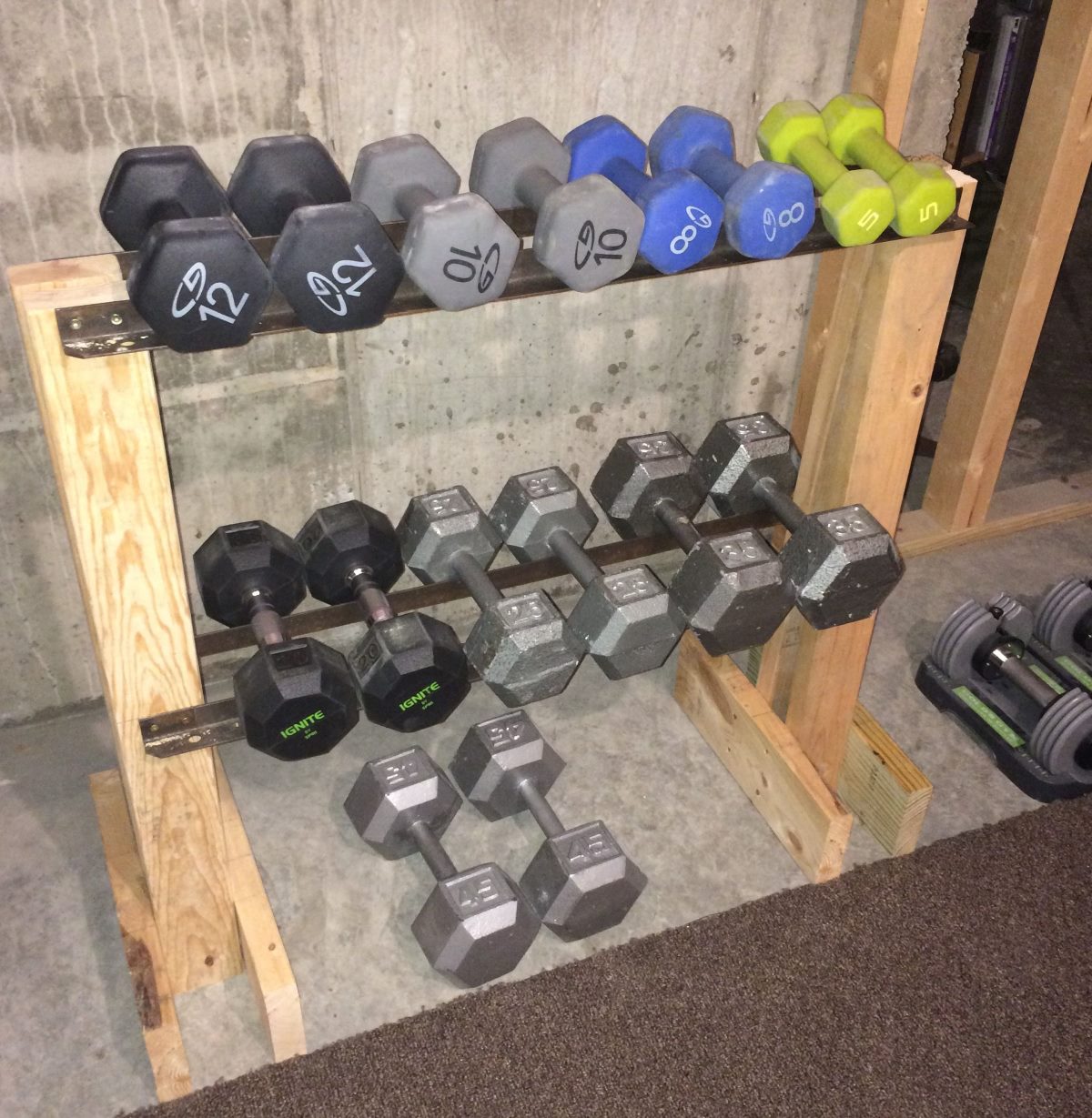

Articles
How To Store Dumbbells At Home
Modified: January 19, 2024
Learn the best methods for storing dumbbells at home with these informative articles. Discover space-saving solutions and tips for keeping your workout area organized and clutter-free.
(Many of the links in this article redirect to a specific reviewed product. Your purchase of these products through affiliate links helps to generate commission for Storables.com, at no extra cost. Learn more)
Introduction
Welcome to the world of fitness! Whether you are a seasoned gym-goer or just starting on your fitness journey, having dumbbells at home can be a great way to stay in shape and build strength. But once you’ve invested in a set of dumbbells, it’s important to know how to store them properly to ensure their longevity and safety. In this article, we will guide you on how to store dumbbells at home effectively.
Proper storage not only helps keep your home organized, but it also prolongs the lifespan of your dumbbells. By following the right storage techniques, you can prevent your dumbbells from collecting dust, getting damaged, or presenting a hazard to yourself or others in your household.
Before we dive into the different storage solutions, it’s important to assess the space you have available and take the necessary safety measures. Ensure that the area where you plan to store your dumbbells is clear of any obstructions, tripping hazards, or fragile objects. This will help prevent accidents and make your workout space safer.
Now let’s explore the various storage options for your dumbbells. Whether you have limited space or a dedicated home gym, there are solutions that will work for you.
Key Takeaways:
- Properly storing your dumbbells at home is crucial for maintaining their longevity and ensuring a safe workout environment. Assess your space, select an appropriate storage solution, and implement regular maintenance to keep your dumbbells organized and accessible.
- Organize and label your dumbbells by weight, separate different types, and regularly clean and inspect them to maintain their performance and longevity. Handle your dumbbells with care and store them in a suitable environment to ensure they remain in excellent condition for years to come.
Read more: How To Hide Dumbbells In Living Room
Assessing Space and Safety Measures
Before selecting a storage solution for your dumbbells, it’s crucial to assess the available space and consider the safety measures needed. Take a good look at your home gym or the area where you plan to store your dumbbells and ask yourself the following questions:
- How much space do you have?
- Do you have a dedicated workout area or will the dumbbells need to be stored in a multi-purpose space?
- Will the dumbbells be easily accessible for your workouts?
- Are there any potential hazards or obstacles in the area?
Once you have a clear idea of your space limitations, you can move on to considering the safety measures needed. Here are some important safety precautions to keep in mind:
- Ensure that the area is well-ventilated to prevent any build-up of moisture or unpleasant odors.
- Avoid storing the dumbbells near heat sources or in direct sunlight, as this can cause damage to the weights or the coating.
- Keep the area clean and free from any liquids or debris that could cause slipping or damage to the dumbbells.
- If you have young children or pets at home, consider storing the dumbbells in a locked cabinet or out of reach to prevent accidents.
- If you have limited space, consider investing in storage solutions that can help maximize the use of vertical or horizontal space.
By assessing your available space and implementing necessary safety measures, you can create a safe and functional storage area for your dumbbells.
Selecting an Appropriate Storage Solution
Now that you have assessed your space and considered the safety measures, it’s time to select an appropriate storage solution for your dumbbells. The right storage option will not only keep your dumbbells organized but also make them easily accessible for your workouts. Here are a few options to consider:
Dumbbell Rack: A dumbbell rack is an excellent storage solution for those with a collection of various dumbbell sizes. These racks typically have multiple tiers or shelves designed to hold different weights. They are sturdy, easy to assemble, and keep your dumbbells neatly organized.
Dumbbell Stand: If you have a smaller set of dumbbells or limited space, a dumbbell stand is a compact and convenient storage option. These stands are usually made of metal or plastic and have slots or trays to hold the dumbbells securely. They can be easily placed on a tabletop or floor, making it easy to grab the dumbbells when you need them.
Wall-Mounted Storage: Wall-mounted storage is an ideal choice if you want to save space and keep the floor clear. There are different types of wall-mounted racks available, such as horizontal racks or vertical racks. These racks are mounted on the wall and provide a secure and accessible storage option for your dumbbells.
Weight Tree: A weight tree is specifically designed to hold a set of dumbbells in a vertical position. It consists of a sturdy base and multiple branches or tiers where you can place the dumbbells. Weight trees are efficient in saving space and keeping your dumbbells organized and easily accessible.
DIY Storage Options: If you’re looking for a cost-effective solution, you can also consider some do-it-yourself storage options. For example, you can repurpose a sturdy bookshelf or build a wooden crate with dividers to hold your dumbbells. DIY storage options allow you to customize the size and design according to your specific needs.
When selecting a storage solution, consider factors such as the size of your dumbbells, the available space, and your budget. Choose a storage option that best suits your needs and fits seamlessly into your workout area.
Utilizing Vertical Storage Options
Vertical storage options are a popular choice for those who want to maximize space efficiency and keep their dumbbells easily accessible. Here are a few ways you can utilize vertical storage for your dumbbells:
Dumbbell Towers: Dumbbell towers are vertical storage solutions that feature a compact design and multiple shelves or slots to hold your dumbbells. They typically have a triangular or A-frame shape, allowing you to store a wide range of dumbbell sizes. Dumbbell towers are freestanding and take up minimal floor space, making them perfect for small home gyms or limited workout areas.
Wall-Mounted Racks: Wall-mounted racks are an excellent option for those who want to save floor space. These racks can be mounted on the wall, either horizontally or vertically, and provide a secure and organized storage solution for your dumbbells. Wall-mounted racks are available in various designs, from simple brackets to intricate systems with adjustable shelves.
Pegboard Storage: A pegboard is a versatile and customizable storage solution that can be used for a wide range of fitness equipment, including dumbbells. By installing a pegboard on a wall, you can hang dumbbell hooks or shelves to hold your weights securely. Pegboards allow you to adjust the placement of the hooks or shelves, making it easy to accommodate different dumbbell sizes.
Overhead Storage: If you have limited floor space, consider utilizing overhead storage options. This can include installing overhead shelves or using a pulley system to hang your dumbbells from the ceiling. Overhead storage keeps your dumbbells out of the way, freeing up valuable floor space for other workout equipment.
When utilizing vertical storage options, it’s essential to ensure that the structure is sturdy and can support the weight of your dumbbells. Securely mount wall racks or shelves to avoid any accidents or damage to your equipment.
By utilizing vertical storage options, you can optimize space utilization and keep your dumbbells easily accessible for your workouts. Choose the option that best suits your needs and complements the layout of your home gym or workout area.
When storing dumbbells at home, consider investing in a sturdy and space-saving dumbbell rack to keep them organized and off the floor. This will help prevent accidents and keep your space tidy.
Utilizing Horizontal Storage Options
If vertical storage options are not suitable for your space or if you prefer a different approach, horizontal storage options can be a great alternative for storing your dumbbells. Here are a few effective ways to utilize horizontal storage:
Dumbbell Shelves: Dumbbell shelves are horizontal storage solutions designed to hold your dumbbells securely. These shelves typically have individual slots or trays where you can place the dumbbells. They come in various sizes and configurations to accommodate different sets of dumbbells. Dumbbell shelves are made from sturdy materials like wood, metal, or plastic, ensuring the durability of your storage solution.
Dumbbell Cabinets: If you prefer a concealed storage solution, consider using a dedicated dumbbell cabinet. These cabinets are designed specifically for storing dumbbells and often have shelves or compartments that can be adjusted to fit your dumbbell sizes. Dumbbell cabinets not only keep your equipment organized but also protect them from dust and potential damage.
Dumbbell Drawers: For a compact and space-saving storage option, dumbbell drawers can be a convenient choice. These drawers are designed to fit underneath a workout bench or other equipment. They provide a concealed storage solution, allowing you to easily slide the dumbbells in and out when needed.
Dumbbell Carts or Trolleys: Dumbbell carts or trolleys are portable storage options that allow you to move your dumbbells around as needed. These carts typically have shelves or trays to hold the dumbbells securely, and they often come with wheels for easy maneuverability. Dumbbell carts are ideal for those who have limited space or want the flexibility to relocate their equipment.
When utilizing horizontal storage options, it’s essential to ensure that the shelves or cabinets are sturdy enough to bear the weight of your dumbbells. Avoid overcrowding the shelves or drawers, as it can cause instability or damage to the equipment.
By utilizing horizontal storage options, you can keep your dumbbells neatly organized and easily accessible. Choose the option that fits your space and personal preferences, ensuring that it provides both functionality and convenience.
Read more: How To Store An Air Conditioner
Organizing and Labeling Dumbbell Sets
Once you have selected a storage solution for your dumbbells, it’s important to organize and label them appropriately. This will not only help you find the right dumbbells for your workouts but also maintain their overall condition. Here are some tips for organizing and labeling your dumbbell sets:
Grouping by Weight: One of the most effective ways to organize your dumbbells is by grouping them according to their weight. This allows you to quickly identify and select the appropriate weights for your exercises. Arrange your dumbbells in ascending or descending order, depending on your preference. This not only makes it easier to find the specific weight you need but also helps promote consistency in your workouts.
Separate Storage for Different Dumbbell Types: If you have multiple sets of dumbbells, such as hex dumbbells, adjustable dumbbells, or rubber-coated ones, consider separating them into different storage areas. This helps prevent confusion and ensures that each type of dumbbell is stored properly. If using a rack or shelf, you can designate specific sections for different types of dumbbells.
Labeling: Labeling your dumbbells can add an extra level of organization. You can use adhesive labels, tags, or colored tape to indicate the weight of each dumbbell. This makes it quick and easy to identify the weight without having to pick up each individual dumbbell. Additionally, you can label the storage area or shelf where the dumbbells belong for additional clarity.
Keeping Accessories Together: If your dumbbells come with accessories such as collars or plates, it’s essential to keep them organized as well. Consider allocating a specific compartment or area to store these accessories. This way, you can easily find and access them when needed, preventing any unnecessary searching or misplacement.
Regular Maintenance: To keep your dumbbells in the best condition, it’s important to regularly clean and inspect them. Dust off any dirt or debris and wipe them down with a clean cloth. This helps maintain the longevity and functionality of the dumbbells. Additionally, check for any signs of wear or damage, such as loose plates or cracks, and address these issues promptly.
By organizing and labeling your dumbbell sets, you can streamline your workouts and ensure that your dumbbells remain in good condition. Adopt a system that works best for you and your specific storage solution, and make it a regular habit to maintain your dumbbells.
Maintaining and Cleaning Dumbbells
Proper maintenance and regular cleaning of your dumbbells are essential to ensure their longevity and performance. Here are some tips to help you maintain and clean your dumbbells effectively:
Inspecting for Damage: Before and after each use, take a few moments to inspect your dumbbells for any signs of damage. Check for loose plates, cracks, or any other issues that may affect their functionality or safety. If you notice any problems, address them promptly by tightening screws or replacing damaged parts.
Cleaning Regularly: It’s important to clean your dumbbells regularly to remove dirt, sweat, and bacteria that can accumulate on the surface. Use a damp cloth or sponge with mild soap to wipe down the dumbbells, paying extra attention to the handles and any textured areas. Avoid using abrasive cleaners that can damage the coating or finish of the dumbbells. After cleaning, make sure to dry them thoroughly to prevent any moisture-related issues.
Rubber Coated Dumbbells: If you have rubber-coated dumbbells, it’s crucial to clean and maintain them properly. Rubber dumbbells can be wiped down with a mixture of mild soap and water. Avoid using harsh chemicals or abrasive scrubbers that can damage the rubber. After cleaning, make sure to dry the dumbbells thoroughly to prevent any moisture from getting trapped and causing deterioration.
Chrome or Metal Dumbbells: Chrome or metal dumbbells may require some additional care to prevent rust or corrosion. After each use, wipe them down with a cloth to remove any sweat or moisture. If you notice any signs of rust, use a gentle rust remover or a mixture of vinegar and water to clean the affected area. Once clean, dry the dumbbells thoroughly and consider applying a protective coating, such as a light coat of oil, to prevent further rust formation.
Storage Environment: The environment in which you store your dumbbells can have an impact on their condition. Avoid storing them in areas that are prone to extreme temperatures, high humidity, or direct sunlight. These conditions can cause damage to the dumbbells or accelerate the wear and tear. Opt for a cool, dry area that is well-ventilated and away from any potential hazards.
Proper Handling: Lastly, always handle your dumbbells with care. Avoid dropping or slamming them on the floor, as this can lead to damage or deformations. Gently place them back on the storage rack or shelf after use to maintain their shape and stability.
By following these maintenance and cleaning tips, you can keep your dumbbells in optimal condition and ensure their durability for years to come. Regular upkeep will not only protect your investment but also provide a safe and clean workout experience.
Conclusion
Properly storing your dumbbells at home is crucial for maintaining their longevity and ensuring a safe workout environment. By assessing your space, implementing safety measures, and selecting an appropriate storage solution, you can keep your dumbbells organized and easily accessible.
Whether you choose vertical storage options like dumbbell towers or wall-mounted racks, or prefer horizontal storage options such as dumbbell shelves or cabinets, the key is to select a solution that works best for your space and needs.
Organizing and labeling your dumbbells by weight and separating different types can help streamline your workouts and keep your equipment in order. Regular maintenance and cleaning, such as inspecting for damage and regularly wiping down the dumbbells, will help prolong their lifespan and maintain their performance.
Remember to handle your dumbbells with care and store them in a suitable environment that is cool, dry, and well-ventilated. Avoid any potential hazards or extreme conditions that could damage your dumbbells.
By following these guidelines, you can ensure that your dumbbells are always ready for your workouts and that they remain in excellent condition for years to come.
So, take the time to organize your home gym space, select the ideal storage solution, and maintain your dumbbells properly. With a well-organized and properly stored set of dumbbells, you are equipping yourself with a convenient and effective tool for achieving your fitness goals in the comfort of your own home.
Frequently Asked Questions about How To Store Dumbbells At Home
Was this page helpful?
At Storables.com, we guarantee accurate and reliable information. Our content, validated by Expert Board Contributors, is crafted following stringent Editorial Policies. We're committed to providing you with well-researched, expert-backed insights for all your informational needs.

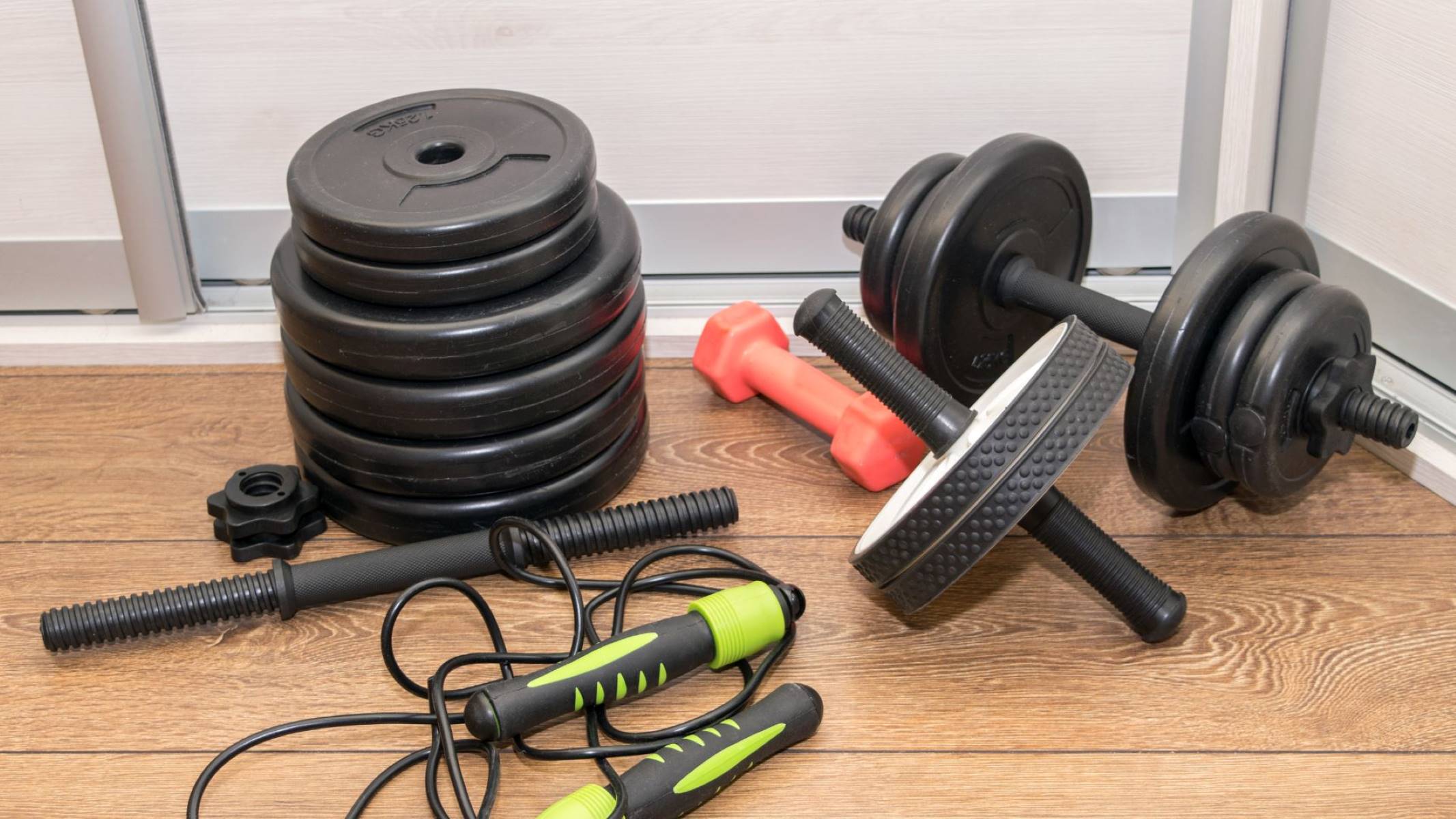
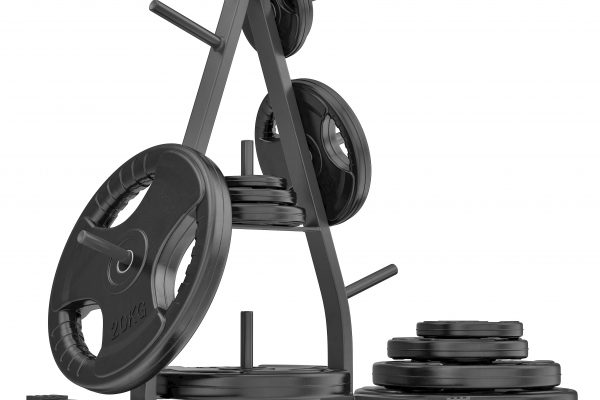

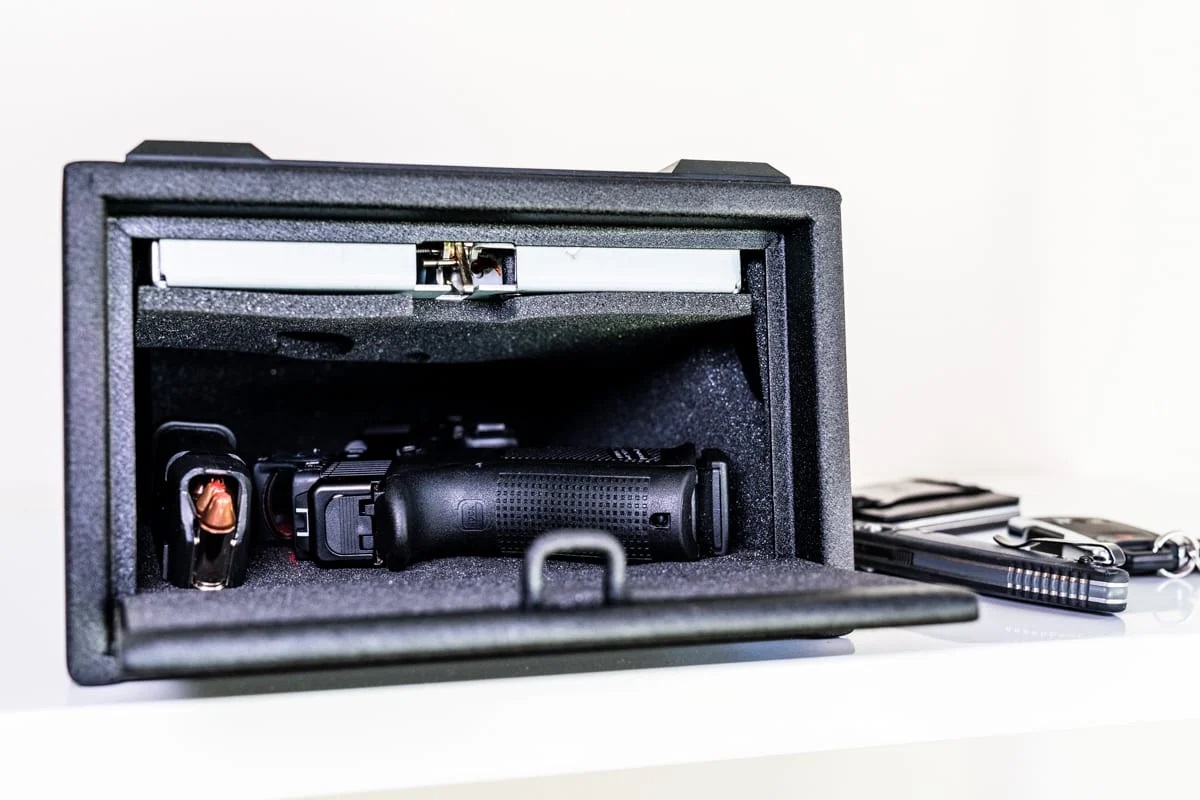

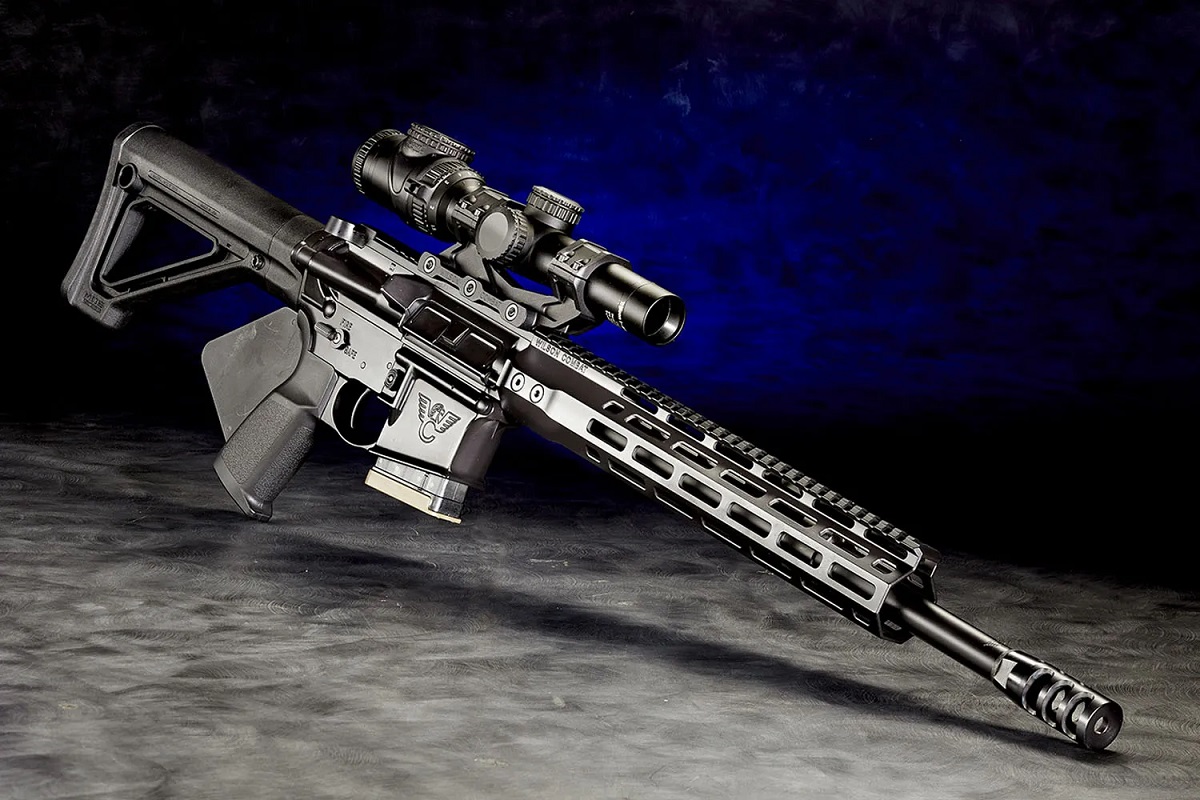
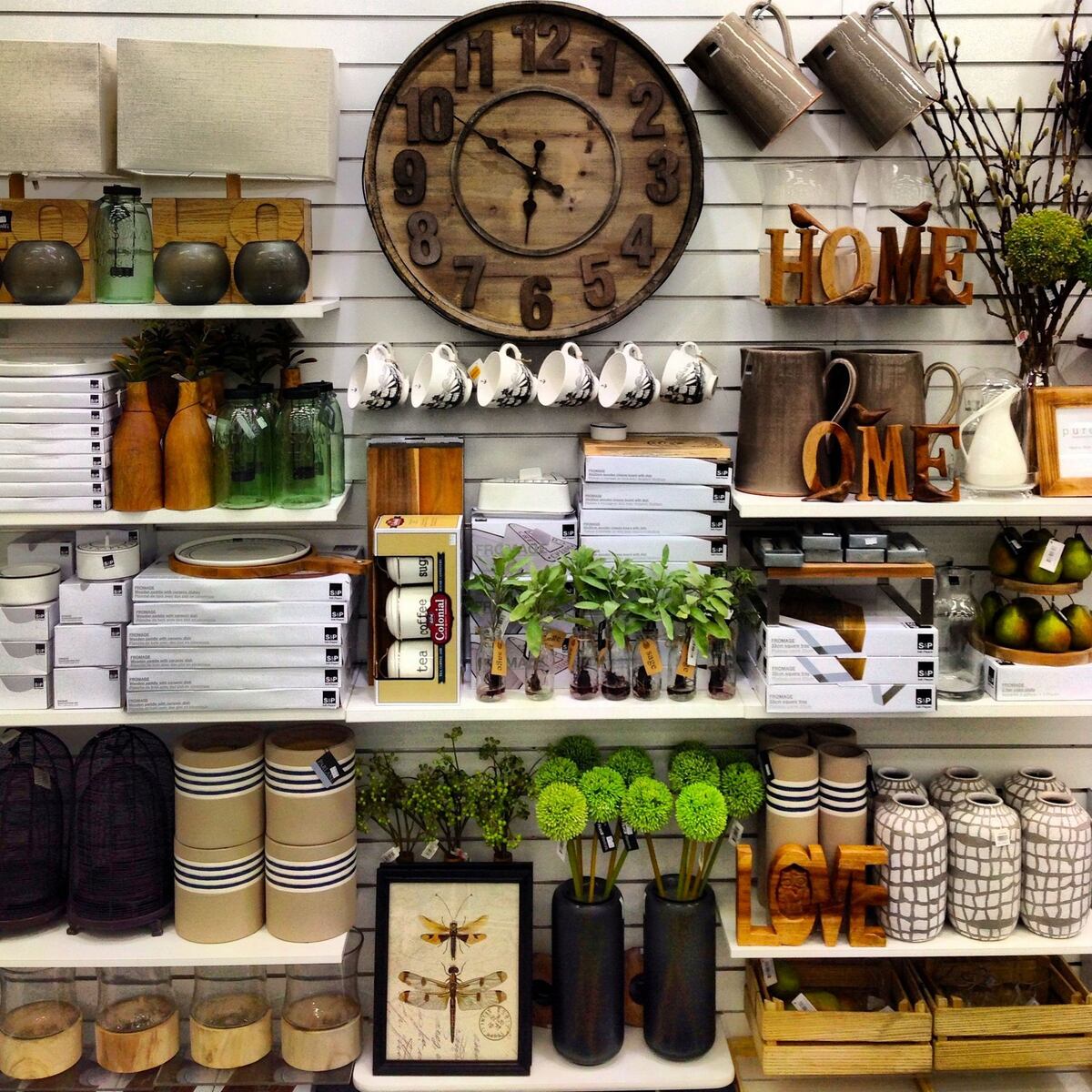

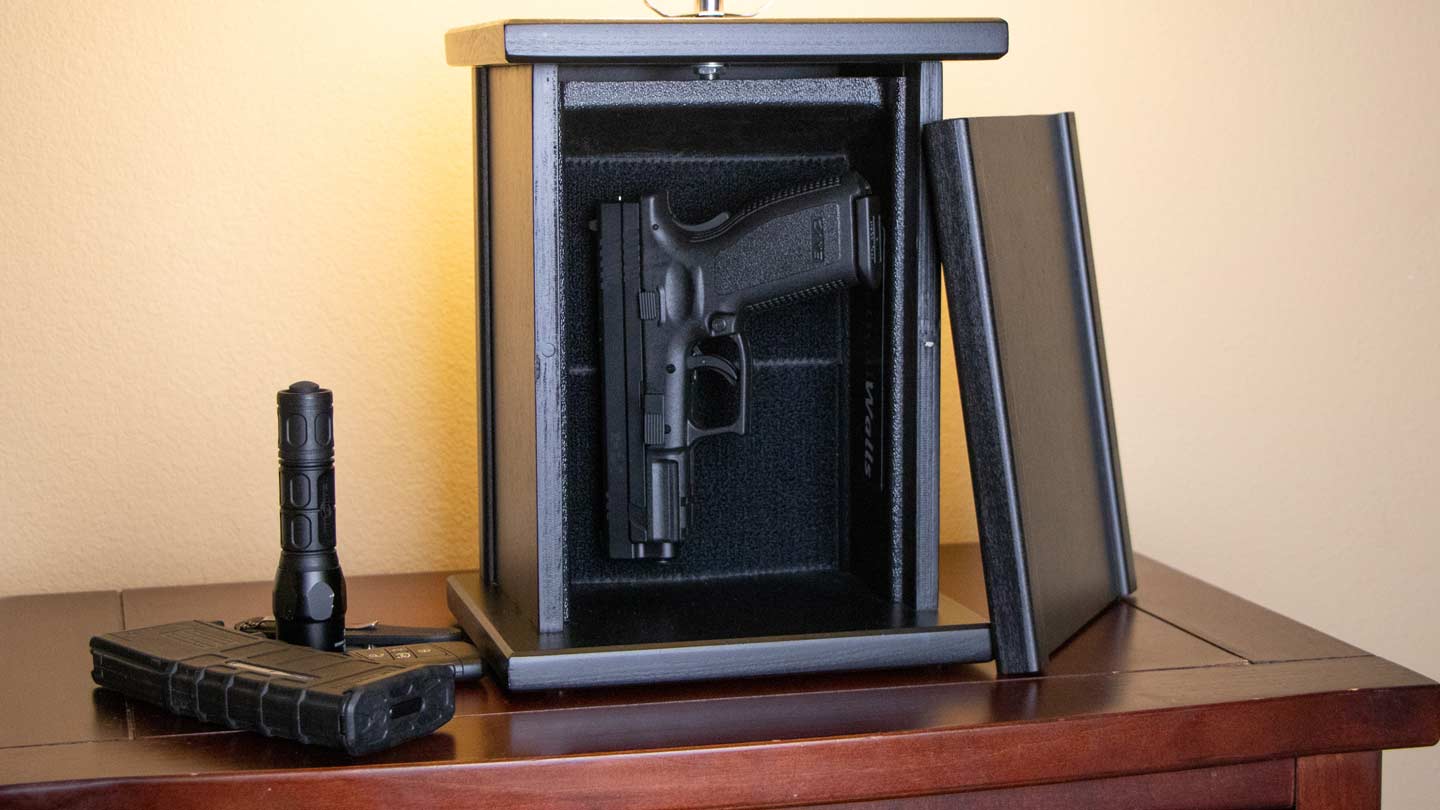
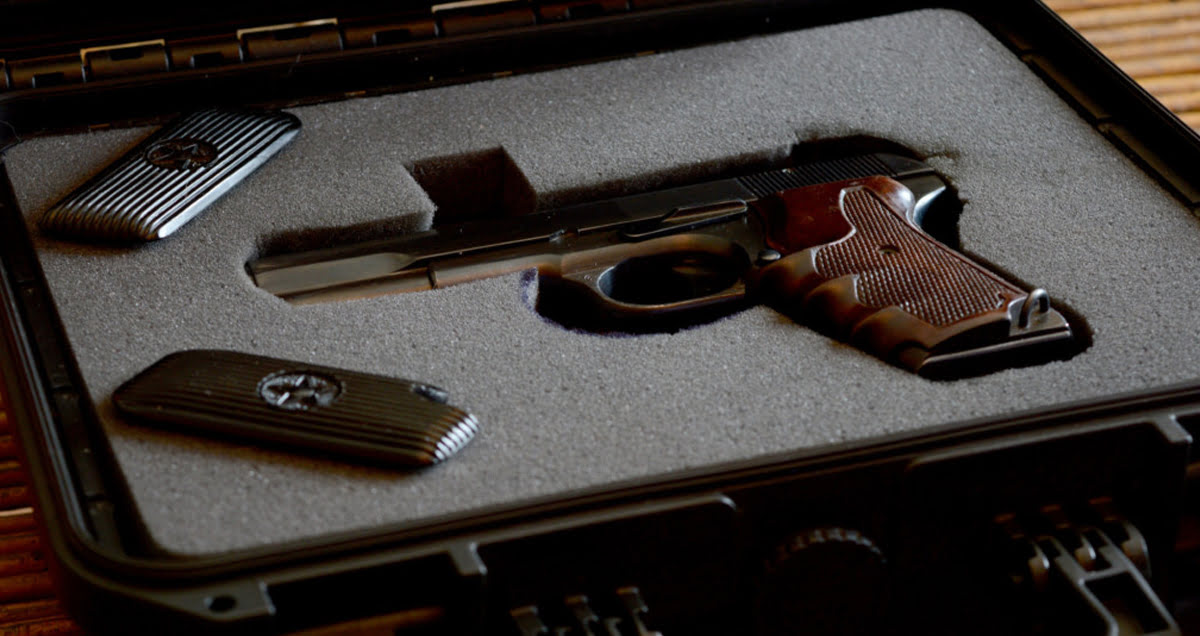
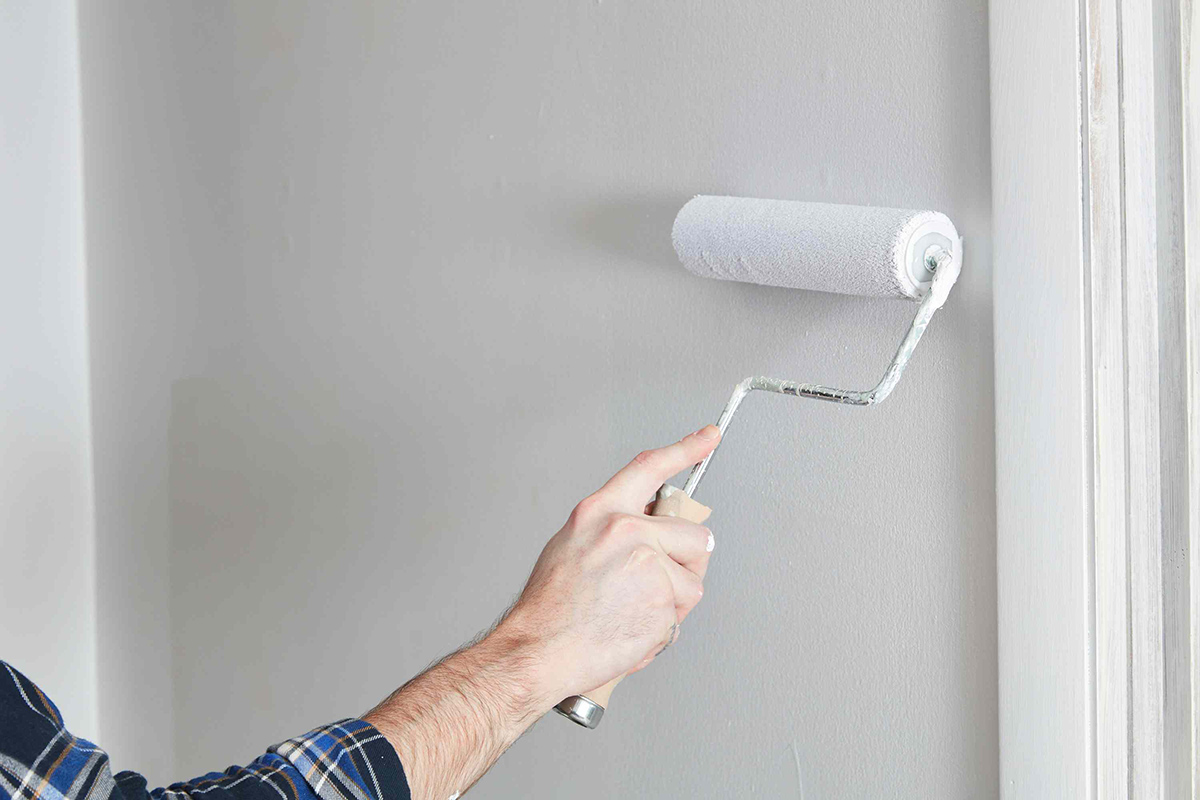

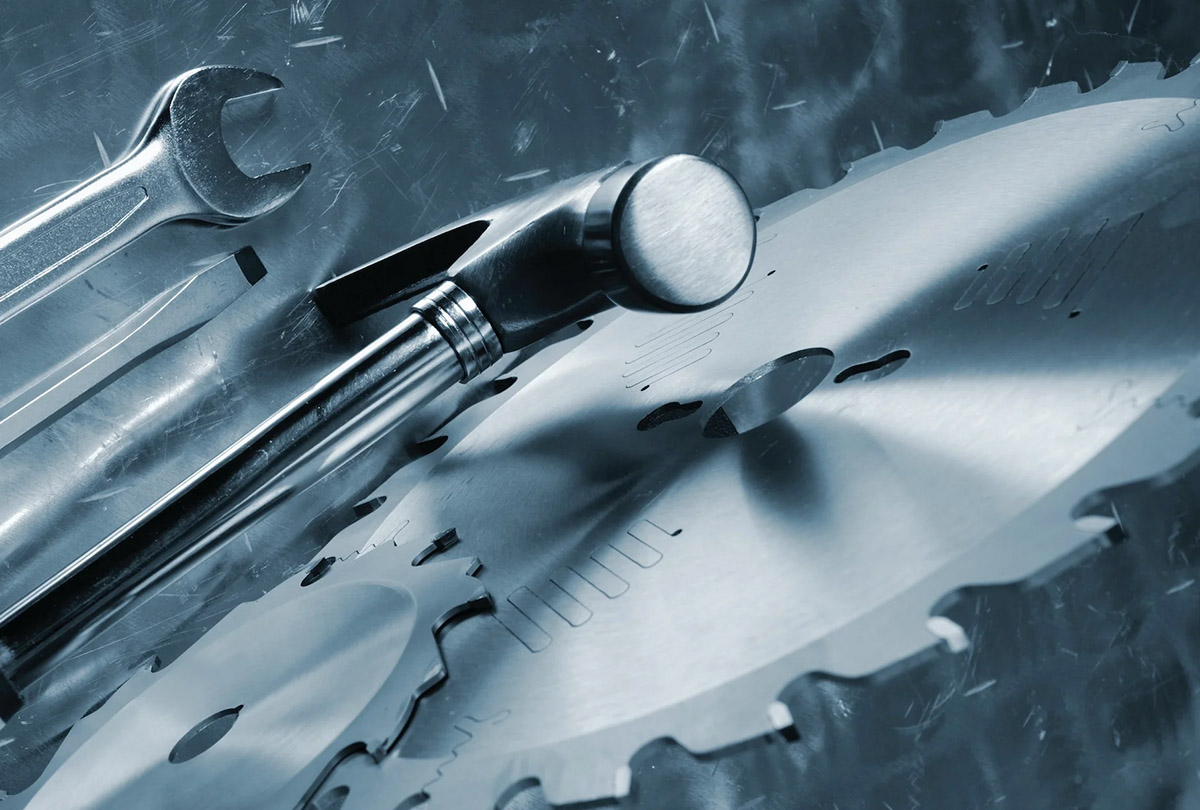

0 thoughts on “How To Store Dumbbells At Home”